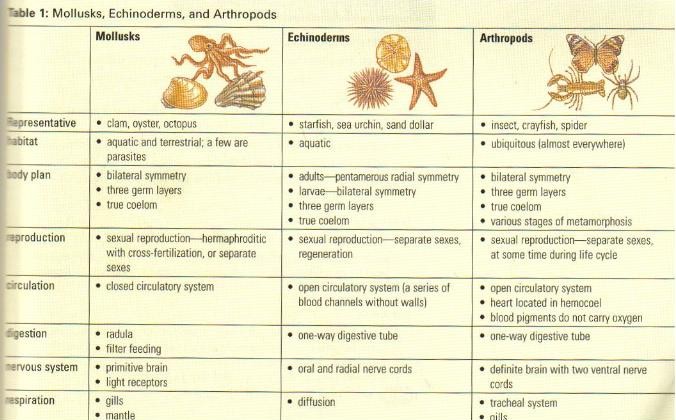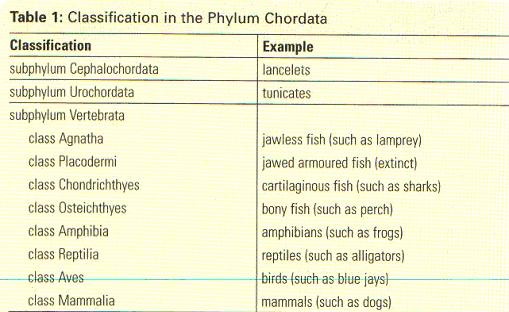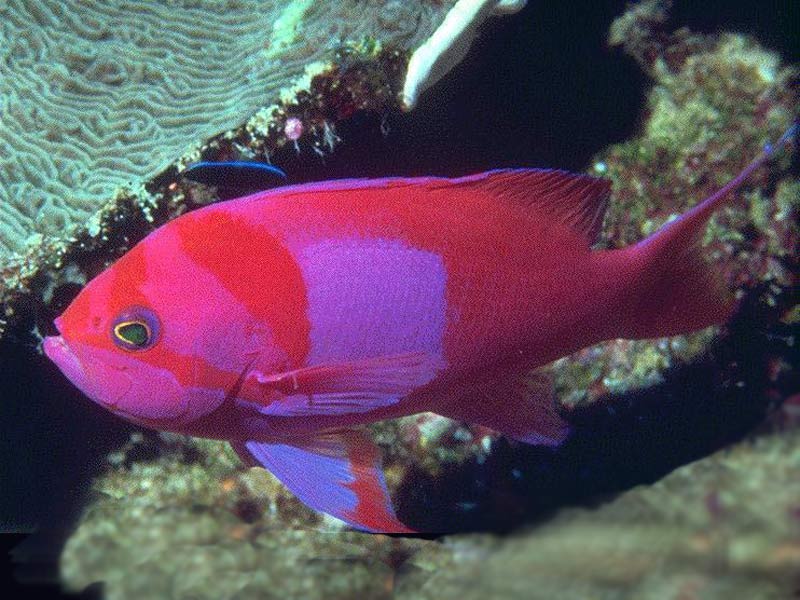|
The Different Phyla

 The Porifera, or sponges, are the simplest animals because they lack true tissues or organs. The Porifera, or sponges, are the simplest animals because they lack true tissues or organs.- Cnidaria possess two different body plans; polyp and medusa.
- Some cnidarians show an alternation of sexual and asexual generations in their life cycle.

- Platyhelminthes
 , or flatworms, have no coelom but they show bilateral symmetry, have mesoderm, true organs, and a primitive brain. , or flatworms, have no coelom but they show bilateral symmetry, have mesoderm, true organs, and a primitive brain.
- Nematodes, or roundworms, are more advanced because they have a pseudocoelom, a nervous system, and a complete digestive tract with a mouth and an anus.
- Annelids are segmented worms and possess a true coelom.
- Segmentation is an important evolutionary advantage because it allows for greater specialization.

- All mollusks posses the same early develop
 ment of the embryo, and have a larval stage before they mature into adults. ment of the embryo, and have a larval stage before they mature into adults.
- Adult mollusks vary greatly in their appearance but they share a common body plan.
- All echinoderms are spiny-skinned animals that live in marine habitats.
- Echinoderms posses a different type of early embryonic development from mollusks. The adult forms possess radial symmetry with five similar body segments
 The most diverse phylum of animals is Arthropoda, characterized by an exoskeleton and jointed appendages. The most diverse phylum of animals is Arthropoda, characterized by an exoskeleton and jointed appendages.- Arthropods include spiders, crustaceans, and insects, which play a vital role in the survival of all life on Earth.
- In arthropods, some segments are fused and are specialized to perform certain functions for the whole animal.

- Some cnidarians show an alternation .
- Fish are the most numerous and widespread of the vertebrates
o They are divided into jawless fish, cartilaginous fish, and bony fish
o All fish have gills
- The earliest vertebrates were aquatic creatures that lacked jaws.
o They have a notochord and a cartilaginous skeleton
o The two groups of living jawless fish are lampreys and hagfish
- Cartilaginous fish are jawed.
o They have a skeleton made of cartilage
o This group includes sharks, skates, and rays
- All other jawed fish are bony fish
o Bony fish are the most numerous
o Bony fish have swim bladders, which help maintain buoyancy and allow the fish to float at different levels
- The three orders are legless amphibians, the tailless
 amphibians, and the tailed amphibians. amphibians, and the tailed amphibians.
- Amphibians have two lives.
o Reproducution occurs in water. They hatch fromeggs and, as tadpoles, are herbivores and exchange gases through gills.
o When they become adults, they live on land, are carnivores, and exchange gases through their skin and lungs
 Birds, like mammals, are warm-blooded; however, unlike mammals, all birds have feathers and lay eggs. Birds, like mammals, are warm-blooded; however, unlike mammals, all birds have feathers and lay eggs.- Birds display many characteristics for flight, such as feathers, hollow quills and bones, very efficient lungs with air sacs, an efficient heart, good vision, and rapid digestion.
- Only monotremes, lay eggs.
- Marsupials bear live young that complete their development in a pouch attached to the mother.
- Most are placentals, all embryo development occurs within the uterus.
- Typically mammals are warm-blooded,
 air breathing, and four legged. air breathing, and four legged.
o They have hair, sweat glands, teeth fleshy lips, a diaphragm, a four chambered heart, and a middle ear.
o Females have mammary glands, which secrete milk to nourish the young.
o An endoskeleton means that mammals can grow continuously without moulting.
o A complex brain and nervous system enables mammals to learn from experience and adapt readily to environmental changes.
|
|
